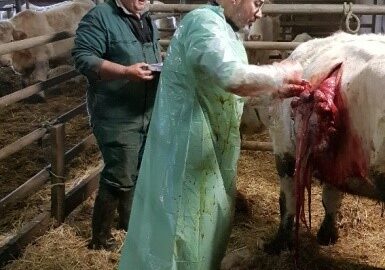La besnoitiose bovine : du diagnostic au contrôle. Intérêts et limites des méthodes diagnostiques pour les matrices sang, lait et peau

Auteurs
Résumé
Désormais mieux suspectée sur le terrain, la besnoitiose bovine peut être formellement diagnostiquée et dépistée par des outils, PCR et immuno-sérologiques spécifiques dont les performances varient selon les matrices et les stades évolutifs du parasite. Les méthodes ELISA sur sérums et laits individuels permettent d’établir un dépistage de précision et d’établir la séroprévalence des élevages infectés. L’ELISA sur lait de grand mélange doit plutôt être utilisée comme un indicateur, à utiliser à intervalles réguliers : ses performances en dépistage de cheptels à séroprévalence > 50% sont excellentes. Enfin, la PCR sur biopsie cutanée paraît être une voie d’avenir pour la détection des bovins les plus fortement contaminateurs en cheptels infectés. L’utilisation parfois conjointes de ces méthodes permet de rendre les stratégies de dépistage puis d’assainissement plus performantes.
Abstract
The usefulness and limits of diagnosis using blood, milk and skin samples. Now more often suspected in the field, bovine besnoitiosis can be formally diagnosed and detected by specific PCR and immuno-serological tools however their performance varies according to the type of sample and life-cycle stages of the parasite. The ELISA methods on sera and individual milk allow precision screening and to establish the seroprevalence in infected farms. An ELISA on bulk milk can be used as an indicator and if it is performed regularly its efficacy is excellent when screening herds which have a seroprevalence >50%. Finally, skin biopsy PCR appears to be a way forward in the detection of the most highly infectious cattle in infected herds. The joint use of these methods makes screening and treatment strategies more effective.
D'autres articles
Découvrez aussi nos formations
05 janvier 2026
5 jours
Bovin laitier · Bovin viande · Bovins


